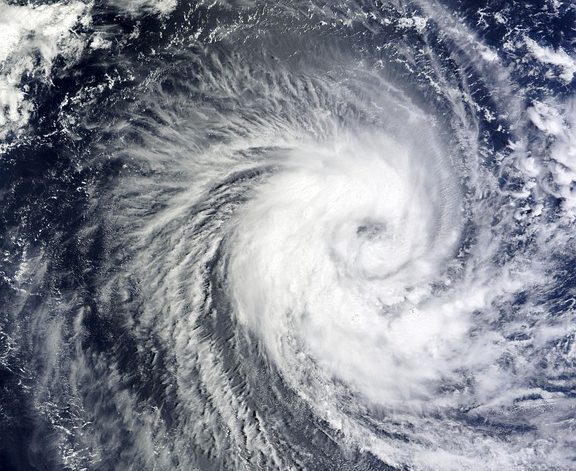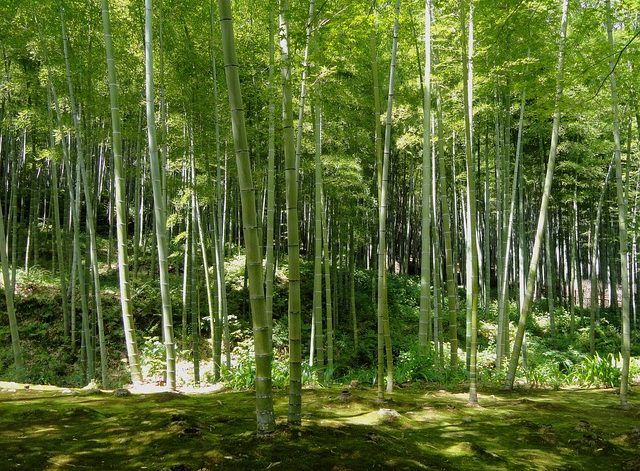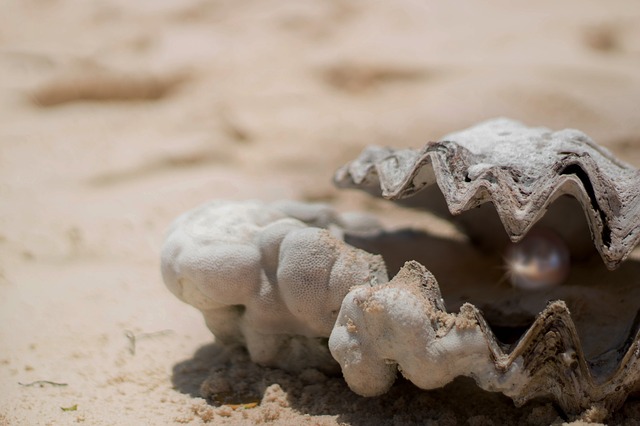What are Tropical Cyclones?
Tropical Cyclones are known by many different names around the world. They are also called Hurricanes or Typhoons. Tropical cyclones are one of the most severe and dangerous type of natural disaster. They are formed over warm ocean waters in tropical regions where the weather is warmer about 26.5 degree Celsius or above as a result of which a low pressure system causes tropical cyclones to form.
A low pressure system is one in which the warmer air is dragged in and moved upwards to form clouds. Sometimes these clouds may move and the air moves along with it which results in high speed winds being generated that are known as cyclones. Tropical cyclones are dangerous and wreak havoc wherever they pass through. They are only dissipated when they pass through land or over cooler oceans or coastal regions. They usually occur during the late summer months and strong winds and rain fall are often features of cyclones.
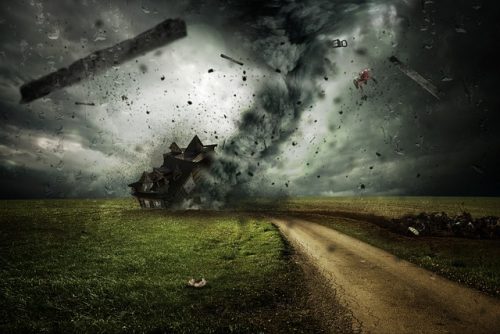
What Causes Tropical Cyclones?
The causes of cyclones, hurricanes or typhoons can be both; man-made and natural. Below are some mentions:
MAN-MADE CAUSES:
- Degrading the quality of the environment is one of the biggest man made causes of increased frequency of cyclones. This is because when the coastal areas and land masses in general have less forests due to deforestation or land clearance; there will be no barrier to stop the approaching winds and therefore the destructiveness of the cyclone will be more severe.
- Global warming due to burning fossil fuels also contributes, as the GHGs trap heat in the atmosphere that results in an overall warmer ocean temperature that subsequently causes the air above water to warm as well and therefore, means that the chances of cyclone forming are increased.
- Climate change and all the factors that affect it are going to increased the frequency and severity of not just tropical cyclones, but all types of natural disasters. For further information you may also want to check out Threats to Natural Ecosystems- Causes, Effects, Management
NATURAL CAUSES:
- Warm ocean winds that form a low pressure center around which less dense air rises up and away from the ocean surface and as a result starts moving anti-clockwise and picks up speed as it forms due to the high pressure winds around it.
- Natural Atmospheric anomaly or instability.
- Increased humidity levels in the atmosphere for long periods of time.
- Vertical wind shear is the change in the direction and speed of the wind as the winds travels higher in the atmosphere. Low vertical wind shear result in cyclone formation and they are crucial in determining what type and how severe the cyclone is going to be.
Also check out: Increasing Natural Disasters due to Climate Change
Effects of Tropical Cyclones:

Tropical cyclones have a number of serious and harmful impacts on the environment as well as humans. Some of them are:
- Destruction of life and property. They cause a lot of loss of life, injuries and destruction of personal belongings like cars that are carried away, roofs of houses that are snatched off, destruction of buildings, telephone poles, windows and other infrastructure.
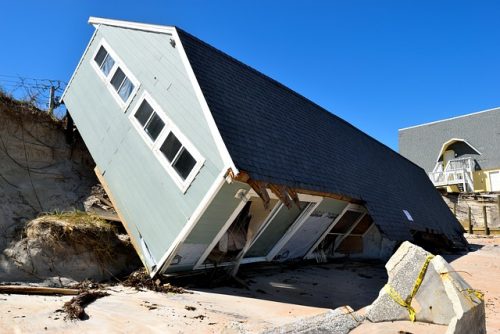
- Cyclones also uproot trees, plants and electric poles causing destruction of habitat, further harming the environment as well as causing loss of electric power and communication systems and therefore making people that are already stranded in the midst of a disaster helpless, without any way to communicate or receive external help.

- Storm surges and flooding is very common with cyclones as they are often accompanied with heavy rainfall and high speed winds that can cause havoc. Coupled together these factors cause double the damage.

- Sea water carried by the cyclone also cause soils to become saline in the aftermath reducing their fertility as well as affect life.
Ways to Manage Tropical Cyclones:
- Construct slanted/sloping roofs to prevent or reduce the likelihood of them being blown away.
- Constructing strong bases for anchoring the base of the house in areas where cyclones are known to form frequently such as in or nearby coastal areas.
- Plant more forests and trees on coastal shores so that if a cyclone ever approaches, its speed and intensity can be reduced by being stopped by the dense trees. One can also plant trees some distance away or around their property or buildings in order to further reduce the impact of the cyclone.
- In cyclone prone areas, proper mitigation steps must be taken in order to prepare for the disaster such as having a shelter ready, disconnecting electrical appliances, having emergency food and flashlights ready along with removing anything that can fly away and cause damage or loss to another life or property such as loose branches, rocks, lawn decorations etc.
- Keep an ear out for any hurricane warning and indications.
You may also be interested in learning more about Landslides and Rockfall – Causes, Effects, and Prevention.
We hope you liked this post! Please comment below if you have any suggestions, comments or feedbacks! We at #envpk love hearing from readers! Thanks.

